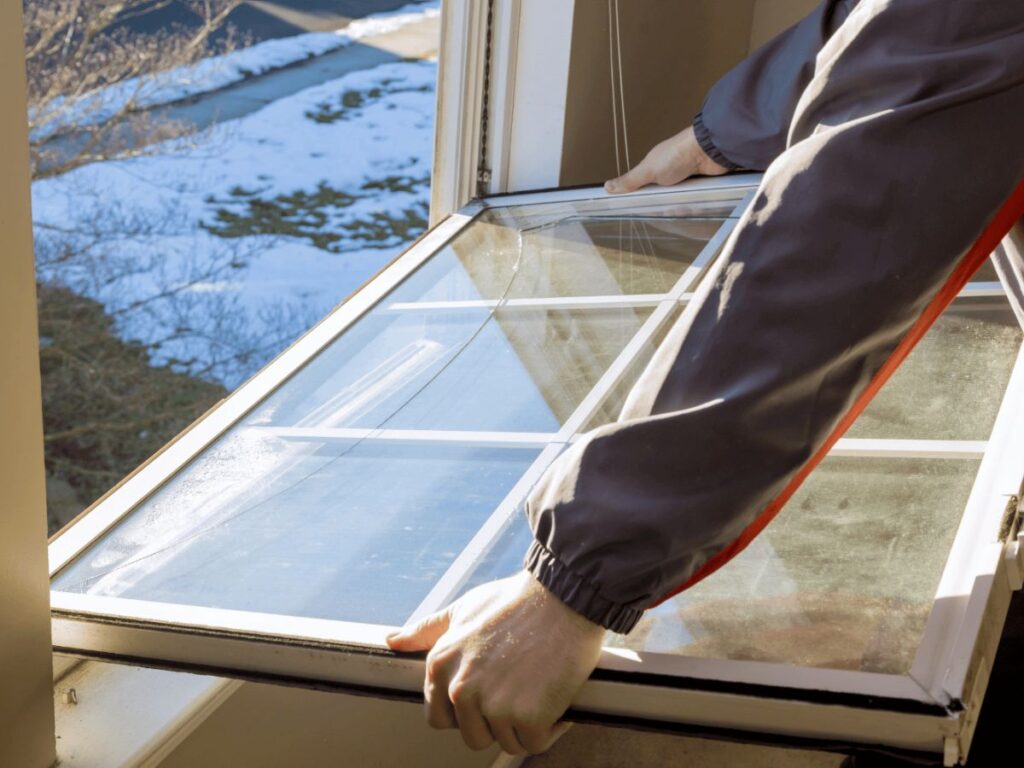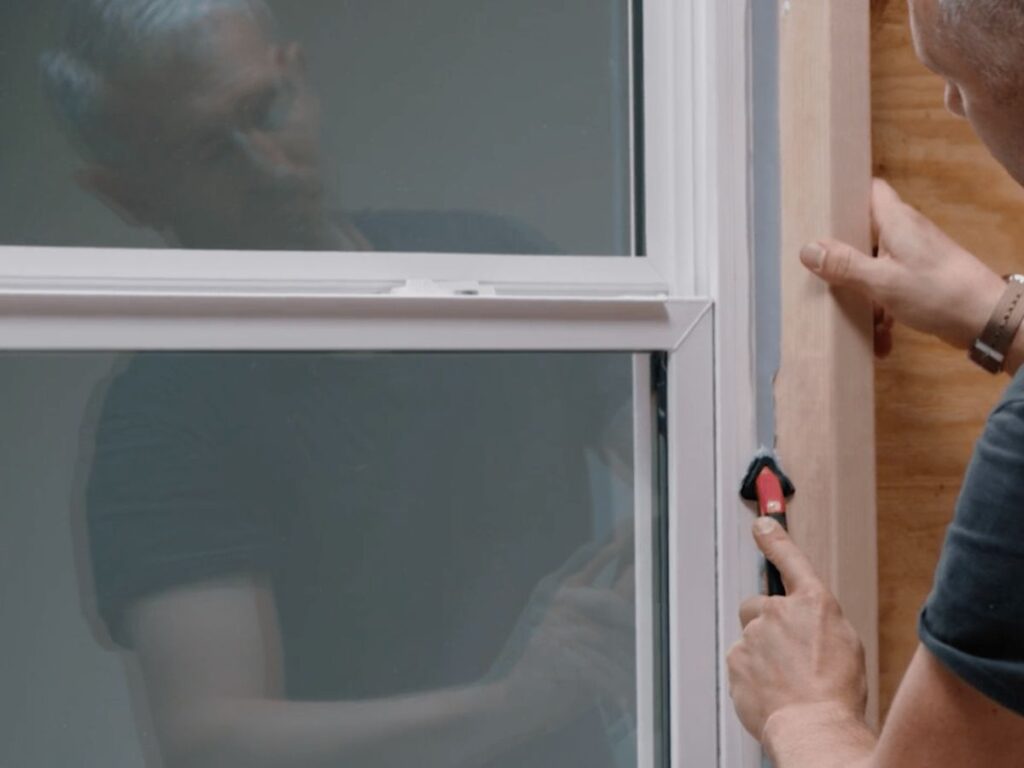A few years ago, I was managing a guesthouse upgrade where the team struggled with installing single hung windows. The lack of a proper guide caused delays and extra labor costs.
Since then, I’ve made it a point to use a repeatable, step-by-step approach for every project.
I’ve handled installations for villas, hotels, and greenhouses, working closely with engineering teams and contractors. This guide is based on those hands-on experiences, not just theory.
In this guide you’ll learn the complete process, from preparation to final checks for installing single hung windows. By the end, you’ll know exactly how to manage the task efficiently.
Installing windows shouldn’t be a guessing game.
So, let’s jump in!
Quick Guide
Here’s a quick glimpse at each step so you see the whole process at once. We’ll dive much deeper into every part right after this.
| Steps | Key Actions | Why It Matters | Mistakes To Avoid |
| Step #1: Planning and Preparation | Measure windows; Review plans; Order materials; Prepare tools | Prevents delays; Keeps work organized | Wrong sizes; Late orders |
| Step #2: Inspect and Prepare the Rough Opening | Check level; Repair damage; Apply barrier | Ensures proper fit; Extends lifespan | Skipping repairs; No moisture protection |
| Step #3: Dry Fit the Window | Position window; Center frame; Check gaps | Confirms fit before securing | Forcing fit; Skipping sash test |
| Step #4: Apply Flashing and Sealants | Install flashing; Apply sealant; Seal corners | Stops leaks; Improves durability | Poor overlaps; Wrong sealant |
| Step #5: Install the Window | Set window; Fasten; Recheck alignment | Keeps frame straight; Secures window | Overtightening; No alignment check |
| Step #6: Insulate and Seal Around the Window | Apply foam; Seal exterior; Caulk interior | Improves efficiency; Blocks drafts | Overfilling foam; Missed spots |
| Step #7: Install Exterior Flashing and Interior Trim | Fit flashing; Attach trim; Seal edges | Protects frame; Improves appearance | Gaps in trim; Warped flashing |
| Step #8: Interior Trim & Finishing Touches | Align trim; Smooth surfaces; Finish joints | Creates clean, professional look | Misaligned trim; Messy caulk |
| Step #9: Final Checks & Clean-Up | Test window; Inspect finish; Clean area | Confirms quality; Satisfies client | Skipping check; Leaving debris |
Alright, let’s move on and go through each of these steps in full detail.
Step#1 Planning and Preparation
Before any tools come out, get clear on what you’re installing and why. In my projects, skipping this step always leads to delays.
Set Your Project Scope
- Confirm Window Sizes and Quantities: Double-check the exact number and dimensions of single hung windows you’ll be installing.
- Review Project Plans: Go over architectural drawings with your engineering team. Make sure every window placement and measurement matches the site conditions.
- Identify Special Requirements: Check if the client requested specific finishes, glass types, or hardware. Knowing this early helps you order the right materials the first time.
- Set a Realistic Timeline: Match your schedule to the crew size and workload. This keeps the project moving without pushing your team into rushed mistakes.
Get Your Resources Ready
- Order and Inspect Materials: Purchase all windows, flashing, and sealants ahead of time. Inspect them on arrival for defects or damage. I suggest sourcing windows from a trusted supplier like Vallisco, known for building windows that perform reliably and maintain their appearance for years.
- Prepare the Right Tools: Gather levels, drills, sealant guns, shims, and safety gear. Having everything in one place saves time during the install.
- Plan Safe Storage: Store windows and materials in a dry, secure spot. This prevents warping, scratches, or other damage before use.
- Assign Crew Roles: Decide who handles measurements, sealing, installation, and finishing. Clear roles keep the workflow smooth and efficient.
Step#2 Inspect and Prepare the Rough Opening
Once you’ve got your plan and materials ready, it’s time to turn your attention to the actual opening where the window will go. This part sets the foundation for a proper fit and smooth installation. I always take my time here because fixing mistakes later is much harder and more costly.
Inspect the Opening
- Check for Level and Square: Use a level to confirm the sill is straight and corners are at 90 degrees. I’ve had to adjust frames before because this step was skipped.
- Look for Structural Damage: Check for rot, cracks, or water damage around the frame area. If you spot issues, repair them before moving on.
- Confirm Opening Size: Measure the width and height to confirm they match your window specs. This helps avoid forcing a bad fit.
Prepare the Opening
- Clean the Area: Remove debris, old sealant, and leftover nails or screws. A clean opening makes the window seat properly.
- Smooth the Surfaces: Plane or sand rough spots that could affect alignment. This gives you a solid, even base for the frame.
- Apply a Weather Barrier: Install building wrap or a moisture barrier as needed. This step protects against water infiltration and extends the window’s life.

Step#3 Dry Fit the Window
With the rough opening inspected and prepared, you’re ready to check how the window will fit before any sealants or fasteners are used. This step helps you spot issues early and make adjustments while it’s still easy. I always find it saves headaches later when the fit is confirmed first.
Position the Window
- Place the Window in the Opening: Gently set the window into position without securing it yet. This gives you a visual check for alignment.
- Center the Frame: Make sure there’s even spacing on all sides. I’ve adjusted many windows at this stage to avoid problems later.
- Hold in Place Temporarily: Use shims or have a crew member hold it steady. This allows you to step back and review the fit.
Check Alignment and Operation
- Verify Level and Plumb: Use a level to ensure the window is straight vertically and horizontally. Even a small tilt can cause long-term issues.
- Test the Sash Movement: Open and close the sash to confirm smooth operation. If it sticks, adjust before you secure anything.
- Inspect Gap Sizes: Look for consistent gaps on all sides. Uneven spacing now can lead to poor sealing later.
Step#4 Apply Flashing and Sealants
Once the dry fit checks out, it’s time to make the opening weather-tight. Flashing and sealants keep water and air from sneaking in around the frame, which is critical for long-term performance. I treat this step as a priority because fixing water damage later is far more expensive than doing it right now.
Install the Flashing
- Start with the Sill Flashing: Apply self-adhesive flashing to the sill, letting it run up each side a few inches. This helps direct water away from the frame.
- Apply Side Flashing: Extend flashing strips up both sides of the opening. I’ve found that overlapping correctly with the sill flashing prevents hidden leaks.
- Check for Smooth Application: Press the flashing firmly into place without wrinkles. Gaps or folds can let water through.
- Add Head Flashing: Place flashing across the top of the opening, overlapping the side pieces. This creates a continuous water barrier.
Apply the Sealant
- Choose the Right Sealant: Use exterior-grade sealant designed for windows. This gives you a strong, lasting bond against the elements.
- Run a Continuous Bead: Apply a steady bead along the nailing flange or frame perimeter. I make sure it’s even so there are no weak spots.
- Seal All Corners: Pay extra attention to the corners where water is most likely to get in. A little more material here can save future repairs.
- Avoid Over-Application: Too much sealant can cause messy squeeze-out when the window is set. Clean, controlled lines make for a better finish.

Step#5 Install the Window
With the flashing and sealant applied, the opening is ready for the window to be set in place. I know this stage can make or break the installation because any mistakes here will show up in the final fit and performance.
Set the Window in Place
- Lift and Position Carefully: Place the window into the opening, pressing it gently into the sealant. This helps create an immediate weather-tight bond.
- Check for Level and Plumb: Use your level to confirm the frame is straight in all directions. I’ve had to re-set windows when this step was rushed.
- Hold Steady: Use temporary shims or have a crew member keep it in place. This ensures it won’t shift while you start securing it.
Secure the Window
- Fasten Through the Nailing Flange: Drive screws or nails into the flange at the manufacturer’s recommended points. Avoid overtightening, which can warp the frame.
- Recheck Alignment After Fastening: Make sure nothing shifted while securing. Small adjustments now are easier than after the trim is on.
- Remove Excess Sealant: Wipe away any squeeze-out for a clean finish. This keeps the installation looking professional and ready for the next step.

Step#6 Insulate and Seal Around the Window
With the window secured in place, the next job is to fill and seal any gaps between the frame and the opening. I make this a careful step because insulation and sealing directly affect energy efficiency and weather protection.
Apply Insulation
- Use Low-Expansion Foam: Choose a foam made for windows and doors so it won’t warp the frame. Applying too much can push the frame out of alignment.
- Work Evenly Around the Frame: Fill gaps on all sides without leaving voids. I’ve had to fix cold spots before where insulation was missed.
- Allow Foam to Cure: Give it the recommended time to set before trimming or adding trim pieces. This keeps the insulation stable.
Seal the Exterior
- Run Exterior Sealant: Apply a bead of sealant along the outside edges where the frame meets the siding. This blocks moisture from getting in.
- Check for Gaps: Look closely for small gaps or cracks. Even the smallest opening can let water through over time.
- Smooth the Sealant Line: Tool the sealant with a gloved finger or sealant tool for a clean, tight finish.
Seal the Interior
- Apply Interior Caulk: Use paintable caulk where the frame meets the interior wall. This helps finish the look and stops air leaks.
- Inspect Inside Corners: Pay special attention to corners, as they’re common leak points. I’ve caught many missed spots during this step.
- Wipe Excess Material: Clean any overflow before it sets. This makes the final trim work easier and cleaner.

Step#7 Install Exterior Flashing and Interior Trim
Once the insulation and sealing are done, it’s time to finish the window’s exterior and interior edges. I always see this step as the one that gives the installation its final polished look while adding another layer of protection.
Install Exterior Flashing
- Fit the Flashing Tight: Cut and place the flashing so it overlaps properly with the siding and the window frame. This keeps water flowing away from the building.
- Secure Without Warping: Fasten the flashing so it sits flat against the surface. I’ve had to redo flashing before when it was bent during fastening.
- Seal the Edges: Apply a bead of sealant where flashing meets the wall or siding. This helps block any water that might try to sneak in.
Install Interior Trim
- Measure and Cut Precisely: Take accurate measurements before cutting trim pieces. This saves material and ensures a tight fit.
- Attach the Trim Evenly: Nail or screw trim in place, keeping edges aligned. Gaps here will stand out once painted or finished.
- Fill and Finish Joints: Use caulk or filler to close small gaps and joints. A smooth finish here makes the final paint job much easier.
Step#8 Interior Trim & Finishing Touches
With the main trim installed, this step is about refining the details so the window looks complete inside and out. I make sure these finishing touches are done carefully because they’re what your client will notice first. A sharp, clean finish leaves a lasting impression and reflects well on your work.
Final Interior Trim Work
- Check Trim Alignment: Look along the edges to confirm everything is straight and even. Small misalignments can stand out once painted.
- Secure Loose Sections: If any part of the trim feels loose, fasten it before moving on. I’ve had to revisit jobs because a small section wasn’t secured properly.
- Smooth the Surfaces: Sand rough spots or filled areas so they blend in with the rest of the trim. This makes for a better paint finish.
Detail the Caulking
- Inspect All Gaps: Look for spots where the caulk didn’t fully fill the space. A tight seal here adds to the professional look.
- Tool the Caulk Lines: Use smooth, even motion to create clean edges. This step makes the work look intentional and neat.
- Remove Any Excess: Wipe away extra caulk before it dries. Clean lines now save you extra cleanup later.
Step#9 Final Checks & Clean-Up
With the trim and finishing touches complete, the last step is making sure the window works perfectly and the site is left clean. This is the time to slow down and carefully review every detail before the client sees the final result. A thorough check now helps prevent small issues from becoming future service calls.
Perform Final Checks
- Test Window Operation: Open and close the sash several times to confirm smooth movement. This ensures the hardware is working as expected. Vallisco windows will not fail you here. Their windows are engineered for consistent performance and built to withstand years of daily use.
- Inspect for Gaps or Leaks: Look inside and outside for any signs of air or water entry. I’ve fixed small leaks at this stage that could have caused bigger problems later.
- Check Locks and Latches: Make sure all locking points engage securely. This helps maintain security and performance.
- Review Trim and Finish: Look for scratches, chips, or uneven paint. A quick touch-up now keeps the work looking professional.
Clean the Work Area
- Remove Protective Coverings: Take off any masking tape, coverings, or protective film from the glass. This makes the finished work visible to the client.
- Vacuum and Wipe Surfaces: Clean up sawdust, debris, and fingerprints. A tidy space shows respect for the client’s property.
- Dispose of Waste Properly: Gather and remove scrap materials, old sealants, and packaging. Leaving waste behind can harm your reputation.
- Do a Final Walkthrough: Take one last look with your crew or client to confirm satisfaction. I find this also gives the client confidence in your work.

Conclusion
Back in that guesthouse upgrade, we struggled because we lacked a clear plan.
Now, you have one with nine steps that take you from planning to a polished finish. Every detail matters, from your first measurement to the final cleanup.
Follow this guide, and you will save time, cut costs, and deliver work you are proud to hand over.
Ready to make it happen? Vallisco windows bring durability and performance that fit perfectly with this process. Your next installation can be smoother, faster, and built to last.
Contact us today and let’s get it done right!
Recommended Reads for You
Interested in more? Here are some additional articles with insights and tips to keep you informed:
Still haven’t found what you’re looking for? Don’t hesitate to contact us. We’re available around the clock to assist you.







